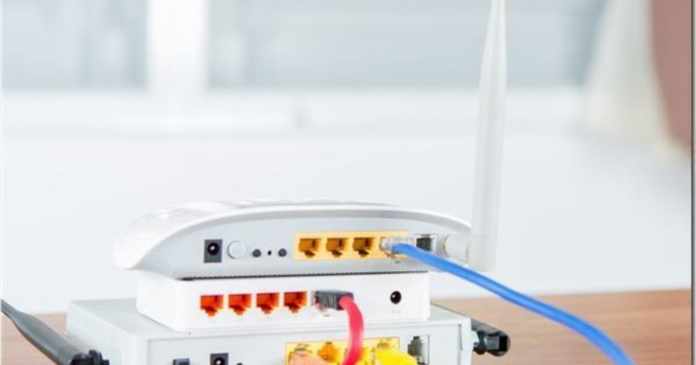Imagine finding your perfect ‘me spot’ in your brand new apartment, where you can just lay in bed or on the couch and binge-watch all your favorite television series. However, just as you get all comfortable and ready to enjoy your solitude, your dreams of fun are ruined by incomplete downloads or streaming ruined by interruptions due to poor network reception from your WiFi. Heartbreakingly annoying, right? Find how to extend your wifi network with an old router.
But your old WiFi router can act as a lifesaver here. Here is detailed information for extending your WiFi network with an old router.
Table of Contents
How Does It Work?
The basic principle at work here is using an old WiFi router to create a new access point in your apartment to provide better network connectivity. There are two ways to do it; you can either use the wireless repeater mode in your router or a physical wire if wireless repeater mode isn’t available. Below is a comprehensive description of using both methods to extend your WiFi network, starting with using the wireless repeater mode.
Using Wireless Repeater
It is the most comfortable and cheapest way to extend your WiFi network as it is free from the hassle of running Ethernet cables through your house. All you have to do is position your old router, which is now acting as an extender in such a way that it receives a proper signal from your WiFi and can transmit it.
The necessary detail to be taken care of here is the old router(extender). If you place it too far away from the primary router, it will not receive a good signal, and placing it too close will defeat the purpose of putting it in the first place as you will continue having a network with old router issues in the farther corners of your apartment.
How To Set Up The Old Router In Wireless Repeater Mode
Not all routers have wireless repeater mode. To check if your router has wireless repeater mode, you can Google its model number and check it online. Many modern routers have wireless repeater mode in them. If you have the wireless repeater mode in your router and it isn’t enabled already, then go through the following steps to allow it to:
- Go to the connectivity menu, under settings
- Choose internet settings in the connectivity menu
- Choose a wireless repeater in the connection type.
- Enter WiFi name for your extender
- Enter password
- Change local IP address of your old router
Pros
- Simple
- Cost friendly
Cons
- Inefficiency: one major drawback of using a wireless repeater is that there is signal loss from the main router to the extender and further loss of signal from the extension to the devices that are to be used, hence providing slower and inefficient network connectivity.
- Placement: as mentioned above, you have to be very careful about your old router’s position concerning the main router and the devices that require connectivity.
- It is not necessary for all routers to have wireless repeater mode.
Using A Physical Wire
Using a physical wire is a far more efficient way as there is no signal loss. If you have Ethernet cables in your house, you can place your old router anywhere in the apartment and have excellent network connectivity.
Most routers have bridge mode in them. You can select it in the internet connection type menu. It will eliminate all the features that are rendered unnecessary as the old router is now acting only as an extender.
However, if your old router does not have bridge mode, you can disable the DHCP server and the firewall and change the old router’s IP address. After the setup using this IP Address tutorial, you can get more details. If you do not have Ethernet cables in your house, you can use coaxial cables called MoCA to do the same.
Pros
- Better network connectivity
Cons
- Ethernet cables are expensive and not necessarily present in all homes.
Using MoCA (Multimedia Over Coax)
Most people might not have Ethernet cables in their homes, but coaxial wires are present in almost every home. MoCA allows Ethernet data to run over coaxial cables; both Ethernet and coaxial ports are present in the adapters in which we put coaxial wires on either side.
To use these cables to extend WiFi, you can connect the Ethernet cable from the WiFi router to the adapter and put the coaxial cable (MoCA) on the other side, and connect it to another adapter, followed by an Ethernet wire connected on the other side of the adapter leading to your old router. If the coaxial cables in your house are connected, you can use multiple adapters and better connectivity to a broader region.
Pros
- Good network connectivity
- Ethernet cables are not available everywhere, but coaxial cables are
Cons
- A huge mess of wires can be formed.
So, this was a brief guide on how instead of throwing away an old router, you can use it in multiple ways to extend your WiFi network connectivity and enjoy streaming and downloading from every corner of your apartment.
Things that we will be needing is listed below ( I found this method easy and quick)
- Ethernet Cable for Setup
- Second Router
- Laptop or PC to log into Router
- Router Username Password (Can be set to default)
- Ethernet Cable runs from Main Router to Extender/AP Router.
Now the question arises which type of old Router we require well. This method’s main reason is that this can be done on any old router, even if it’s 10-15 years old. Isn’t it amazing? But yes, the newer the Router, the better since wireless technology has improved over the years.
We need to remember that each Router has its login and password.
Steps
Following are the steps
1. Connect the Router to a laptop or PC with an Ethernet cable.
We have to be sure that we don’t have any running internet connection on the pc it won’t work then.
2. Log into the Router with the IP address it should be on.
Sometimes the IP add will be on the bottom of the Router. If not, it can be found using the command prompt Window. ( CMD and press the Enter Key in the command window.)after this type ipconfig in the command window. We will need the Router Default Gateway IP address to log into it.
3. Log in to the Router with a browser such as Chrome.
After opening the Chrome in the URL tab, enter the IP Address of the Router.
4. The username and password of the Router should be entered.
If you don’t have a username and password, we can Google search for the router name and model for the default username/password.
5. Go into wireless settings and set up an SSID and password for the wifi.
- Each Router will have a unique menu system, but the options will be there somewhere.
- Give a new SSID(service set identifier) broadcast name that is easy to remember.
- Setup the wireless password.
The most important setting for the Router is to Turn Off DHCP.
This setting is found in the Advanced and LAN Setup.
Turn off DHCP.
We don’t want the old Router assigning IP addresses as the main Router will do this. We want it to act as an access point.
- Give it a unique IP address by changing the last subset to a higher number.
- For example, here, the IP address has been changed from 192.154.8.5 to 192.168.4.2
- The first three subsets will remain the same and match the main Router, only changing the last subset to a high number.
- The last step is to place the Router where it is needed and run an Ethernet cable.
- Be sure to only plug the Ethernet cable into the LAN ports on both routers.












